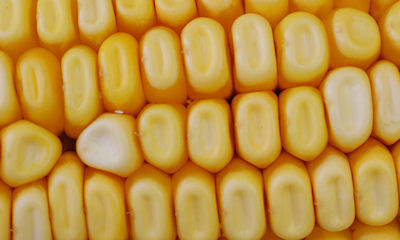May 19, 2015

By Dave Nanda
Is it realistic to think about 400-500 bushels per acre corn yields? Or is it just a corn breeder's dream?
Do we have the germplasm available to create corn hybrids shaped like a Christmas tree with upright leaves? Would they would be more efficient capturing solar energy, creating more photosynthates and increasing yield? Can we develop these hybrids with different relative maturities? The answer to all these questions is "yes".

Corn genetics must be at the forefront of yield-maximizing efforts
The corn plant evolved in Mexico from natural crossing of two grass species, Tripsacum and Teosinte. Individual kernels were wrapped in separate pods. American Indians were the original "breeders" who selected seeds from plants that produced more grain, made better flour or tasted better.
Corn has the gene pool that can be molded according to our needs. It has tremendous range of variability and adaptability, with 65 to 130 days relative maturity. Ears vary from strawberry size to two feet long. Number of rows varies from eight to 40. Gaspe Flint from Canada tassels in four weeks and is only two feet tall. Tropical corn grows 12 to 15 feet tall.
Birth of concept plant
We've selected plants for bigger ears for thousands of years for ease of hand harvest. However, we now harvest with combines but were still breeding for bigger ears. There's a limit to ear size. Ears have become so large in some cases plants can't hang on to them long.
Farmers wouldn't care if we could increase yields by harvesting more, but smaller ears. To accomplish every project we need a concept, materials and methods. Our project is developing inbred lines for the future that would be parents of higher yielding hybrids.
Concept plants should be short with mostly upright leaves, stiff stalks with excellent roots, resistant to insects, diseases, drought and stress with high test weight. Scientists must breed eight to 10 years into the future. If we expect farmers will plant 60,000 to 70,000 seeds per acre, we should develop inbred lines and test experimental hybrids at those populations.
Gene pools that might contain DNA for developing inbred lines and hybrids to create the shape of concept plants are available in every relative maturity. Hybrid corn was introduced in 1934. Many corn inbred lines were released by universities.
~~~PAGE_BREAK_HERE~~~
More than 400 seed companies were started by progressive farmers with these inbred lines. Hybrids made from inbreds like 38-11, A619, A632, A634, A641, B14, B37, B73, MO17, N22A, NC251, OH43, OH45, OH51A, MS1334, PA91, VA26, VA35, WF9, W64A, W117 and W153R, W59M covered the Corn Belt. Genetic populations like Lancaster, Iodent, Reid's Yellow Dent and Stiff Stalk Synthetic were great sources for development of new inbred lines. During the last 40 years many improved versions of these lines were developed.
Modern efforts
Unfortunately, we've committed too many resources to development and conversion of herbicide and insect resistance traits at the expense of improvement for agronomic traits and yield. It's time to get back to breeding for higher yields, drought and stress tolerance, and nutritional traits.
With advances in marker and gene editing technologies to support classic corn breeding, we'll make tremendous gains in yield with upright leaves, suited to high plant populations planted in equidistant spacing.
We've said for years we need major changes in morphology to capture more sunlight and make major improvements in yield. Solar panels on buildings are installed at a certain angle to maximize capture of the sun's energy. We need to do the same with the corn plant.
Many corn breeders have begun working on this model. The first of such hybrids from these efforts were planted on farms this year.
Nanda is Genetics and Technology Consultant for Seed Consultants, Inc. Email him at [email protected] or Call him at 317-910-9876.
You May Also Like




